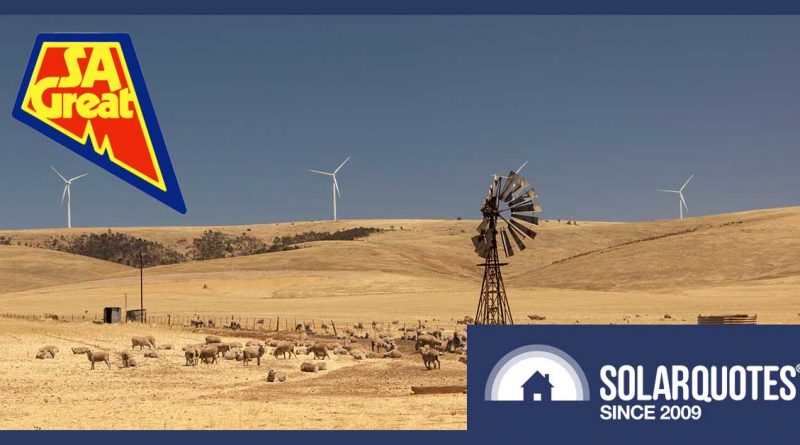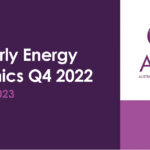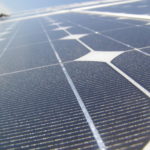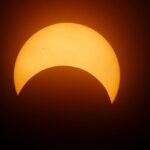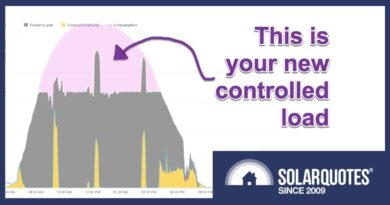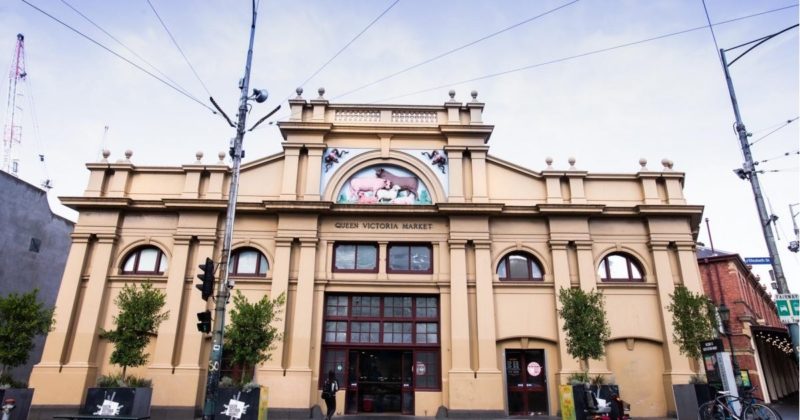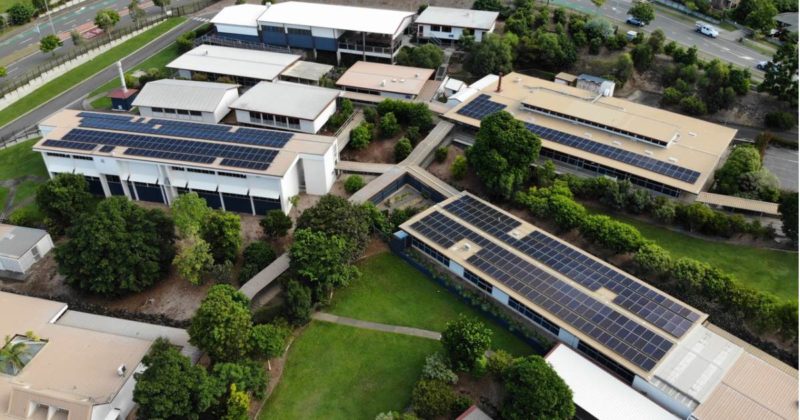Renewables Now 60% Of South Australian Electricity Generation
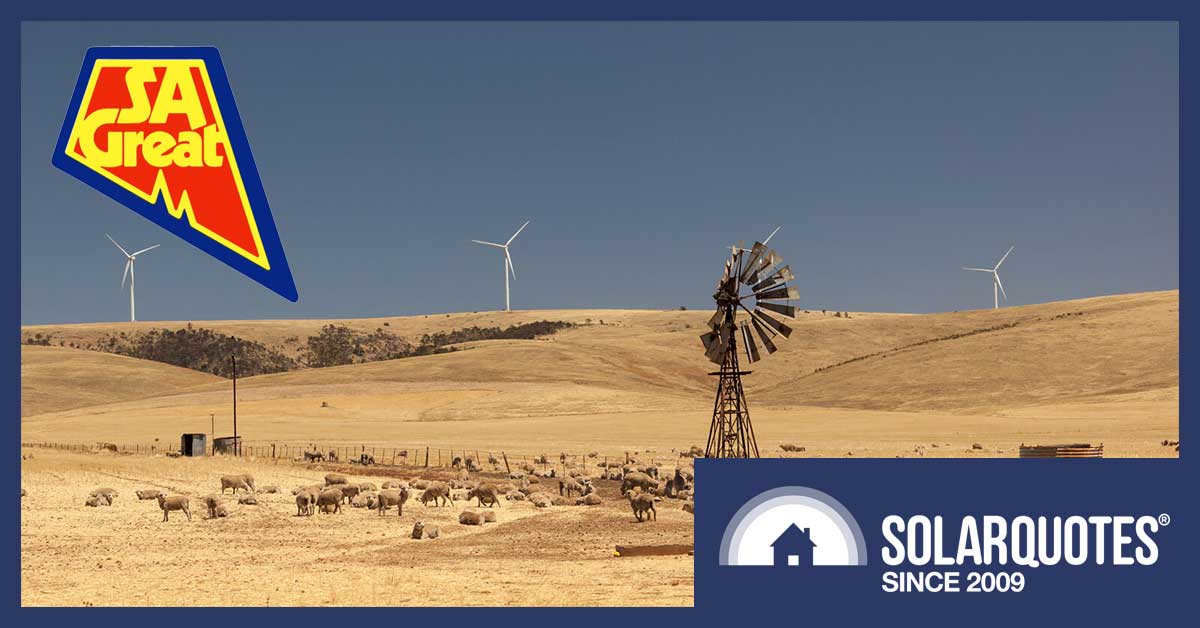
The 21st century has brought radical change to South Australian electricity generation. Eighteen years ago SA had the least renewable energy in the country thanks to hydroelectricity being a tough sell in a location as dry as a Sao biscuit and twice as flat.
But that didn’t stop South Australia going from a single 150 kilowatt wind turbine and a handful of solar panels to become a world leader in renewable energy, with more than 60% of its generation now coming from wind and solar power.
Last month the South Australian Electricity Report for 2020 was published by the AEMO, which are the mob in charge of keeping our electricity grids ticking over. I read through the whole thing — except for the parts I didn’t — and found it was full of interesting information on the state’s ongoing transformation to net zero-carbon generation.
I’ll summarize the most interesting points in the report in this article, but on account of my sunny disposition, I’ll particularly focus on solar power, despite the bulk of the state’s clean electricity generation currently coming from wind.
Positive Points From Report
The report states that in South Australia during the 2019-20 financial year:
- Total electricity generation increased 0.6%, but there was a pandemic related 1% drop in per capita consumption.
- The state’s generation was 59.6% renewable: 42.9% wind and 16.7% solar energy.
- For one hour on 11 October, solar energy generation was enough to meet the state’s entire consumption.
- 33% of SA homes now have rooftop solar panels.
- Rooftop solar provided 11.6% of generation.
- By June 30th 2020 rooftop solar capacity totalled 1,417 megawatts. A 27% increase from 12 months earlier.
- Approximately 6,000 home and business batteries were installed, bringing the total to around 17,000.
- Net electricity exports to Victoria were 6% of electricity generation.
- Plans for an interconnector between SA and NSW moved closer to approval.
I’ll go into more detail on these points below, but first I’m afraid I must reveal it’s not all good news.
Problematic Points From Report
Getting South Australia to a point where wind and solar are over 60% of generation has provided plenty of challenges. There are problems involved with integrating energy from large scale wind and solar farms as well as from rooftops. Rather than go into the multitudinous problems in great detail, I’ll merely mention two major ones:
- Declining grid stability.
- Limited transmission capacity.
While some people moan and groan about the grid’s growing pains as it accepts more renewable energy, the challenges of greening the grid are a lot easier to deal with than global warming causing even worse bushfires or simmering the oceans into rotting soup.
Per Capita Consumption Down 1%
Electricity production is down around the world thanks to the pandemic, but in Australia the fall has only been a couple of percent. South Australia appears to buck the trend as electricity generation in 2019-20 rose 0.6%. But because electricity exports to Victoria increased, state electricity consumption actually fell by 0.3%. Allowing for typical annual population increase, South Australia’s per capita electricity consumption fell 1%.
While this will mostly have been due to the pandemic related economic slowdown, some will be from improving energy efficiency, and weather will also have had an effect.
Wind & Solar Now Over 60% Of Generation
In 2019-20 renewables supplied 59.6% of all electricity generation. As net electricity exports were equal to 2.8% of generation it means the state generated renewable energy equal to 61.3% of its total consumption.
The renewable generation was almost entirely wind and solar power. While there is an itty bitty baby hydroelectric generator attached to the grid, its output is basically a rounding error as it produces as much energy as half a 3 megawatt wind turbine. The percentage of electricity generation supplied by the two serious sources were:
- Wind: 42.9%
- Solar: 16.7%
Because the figure of 59.6% renewable generation was the total for the 2019-20 financial year that ended 5 months ago and solar capacity has continued to expand since then, I now officially announce1 that South Australia’s electricity generation is over 60% renewable.
Solar Energy Generation Up 35%
Solar is by far South Australia’s fastest-growing source of electricity supply. Its output in 2019-20 increased 35% from the year before.
The AEMO now divides solar generation into 3 categories. Most people know the first two:
- Rooftop PV: These are solar panels on the roofs of homes and businesses. Despite the name, a small portion is mounted on the ground.
- Solar: While the name may make you think this category refers to all solar, it’s actually only large solar farms with hundreds of thousands of panels.
The AEMO also has a third category that’s between these two:
- PVNSG: This stands for PV Non-Scheduled Generation2 and covers smaller solar farms that are above 100 kilowatts but not large enough to fit into their solar category. These modest solar farms can be several megawatts in capacity and are usually installed by large companies to directly offset their grid electricity consumption. This is the fastest-growing category.
The percentage of electricity generation supplied by each in 2019-20 and how much their capacity grew over that year was:
- Rooftop PV: Supplied 11.6% of generation and grew 20.9%.
- PVNSG: Supplied 1.8% of generation and grew a whopping 138.9%.
- Solar: Large scale solar farms supplied 3.3% of generation and grew 60.1%
Fossil Fuel Generation Down 8.8%
Fossil fuel based electricity generation, which is over 99% natural gas in South Australia, fell 8.8% from the previous year and provided 43.3% of generation in 2019-20. The now low cost of solar power means this is going to occur around the world, so the idea of a natural gas led economic recovery is as nutty as a Nutella sandwich that uses peanut butter brittle for bread.
Battery Capacity Expanding
In the report, battery storage is classified as a supply source. If this seems odd to you — good! Because there are unavoidable losses when charging and discharging, batteries will always provide less energy than what is put into them. But because they can act like a dispatchable power station and supply power on demand, I can see why they’re on the table.
While they suck up more energy than they spit out, because they suck when it’s convenient for the grid and spit energy when it’s most needed, they’re beneficial things to have around. While in 2019-20 battery storage only supplied stored energy equal to 0.32% of total generation, the AEMO expects battery capacity to rapidly increase.
Over 2019-20 roughly 6,000 home and business batteries were installed in South Australia, bringing the total to around 17,000. That was a 35% increase. The AEMO estimates the amount will triple to about 50,000 by 2025. If 90% of the batteries are residential, that’s 1 in every 15 homes.
Greenhouse Gas Emissions Down
In just 7 years South Australia halved greenhouse gas emissions from electricity generation. This graph shows them falling from 600 grams of CO23 per kilowatt-hour to 290 grams:
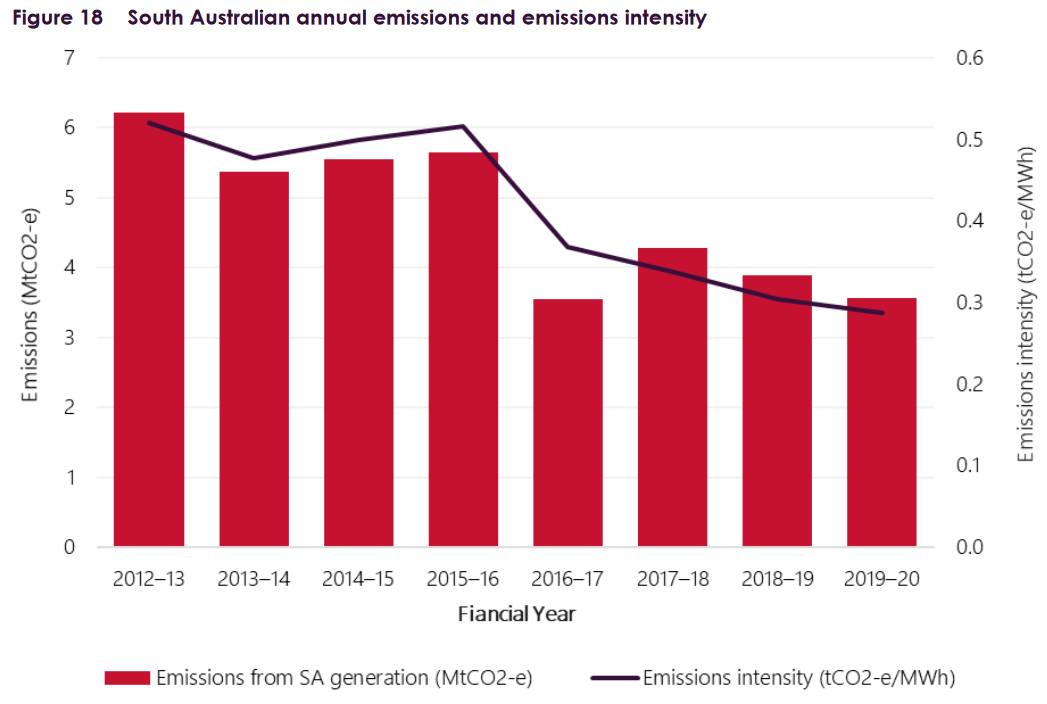
This shows greenhouse emissions dropping by more than half per kilowatt-hour over 7 years. The word “Fiancial” at the bottom is a sophisticated way of saying “Financial”. I would explain how cool the AEMO is for using it but — let’s face it — unless you’re super cool like me and the AEMO you probably just wouldn’t get it.
Committed New Supply is 100% Renewable
Committed new supply refers to grid generation projects almost certain to go ahead. At the moment they’re all renewable. New capacity that will be completed by March 2022 in South Australia consists of:
- 296 megawatts of new wind power.
- 87 megawatts of new solar farms.
Note these figures don’t include rooftop solar power and smaller-scale solar farms (PVNSG in AEMO speak.)
Prospective New Supply Is 87% Renewable
Proposed projects that are iffy on whether or not they’ll actually go ahead are called prospective new supply, and these projects are 87% renewable by capacity. While this percentage may seem impressive, it was 91% before the pandemic caused some projects to be cancelled and lowered the cost of gas and diesel. Despite this temporary reverse, the trend is clear. Thanks to the falling cost of renewables and energy storage soon no one will want to build new fossil fuel capacity.
The total prospective new supply as of November 2020 in South Australia is…
- Gas: 803.2 megawatts
- Diesel: 154 megawatts
- Solar: 2,783 megawatts
- Wind: 3,623.4 megawatts
Note this doesn’t include rooftop and small scale solar farms (PVNSG).
Big Batteries May Be Built
In addition to the large number of home and business batteries expected to be installed, larger-scale projects are likely to go ahead in South Australia.
Committed battery projects are relatively small and consist of two Virtual Power Plants (VPPs) making use of home batteries:
- SA Government VPP with 5 megawatts of power and 13.5 megawatt-hours energy storage.
- The Simply Energy VPP with 6 megawatts of power and 16 megawatt-hours energy storage.
But if an interconnector to NSW is built then the massive Goyder South Hub battery is also likely to go ahead. This will have 900 megawatts of power and 1,800 megawatt-hours of energy storage. This is enough to supply more than one-quarter of South Australia’s maximum grid demand for up to two hours.
When all the prospective new supply for larger-scale battery projects are added together it comes to 1,567.6 megawatts of proposed battery capacity. While a figure for energy storage capacity wasn’t given, it would be well over 2,500 megawatt-hours.
SA To NSW Interconnector Likely
Project EnergyConnect is a plan to build an 875 km transmission line between South Australia and New South Wales. It’s estimated to lower electricity bills per household in South Australia by around $100 and $61 in NSW. Because there are four and a half times as many people in NSW that state actually gets the most benefit.
Despite recently bumping up the estimated cost from $2 billion to $2.5 billion, it’s very likely the interconnector will go ahead because interest rates are extremely low and are turning negative for the federal government. This means the interconnector only has to earn back around as much money as it costs to build to be a worthwhile investment. Because it will allow increasing renewable capacity to be more easily integrated into the grid and reduce fossil fuel use, it will have benefits beyond lower electricity bills.
Renewable Expansion Faces Challenges
The expansion of renewable generation in South Australia is wonderful because it means we’re less likely to be killed by our own pig-headed stupidity. If South Australia can rapidly reduce greenhouse gas emissions then other locations can also do it, which will allow humanity to limit the damage it’s causing through global warming.
But it hasn’t been all beer and skittles. South Australia has faced numerous challenges in exceeding 60% renewable generation. Fortunately — despite a large number of idiots intentionally getting in the way — the state has handled them admirably and I expect the state to continue to do so even while concurrently exceeding its idiot quota.
The reason why I expect renewable generation to continue to expand is because big companies like making money more than they like losing it. Using solar, wind, and energy storage is now generally cheaper than fossil fuel alternatives even when fossil fuel generation doesn’t have to pay for the health and environmental costs of its emissions. But just because renewables will expand doesn’t mean it won’t create problems that have to be dealt with.
Two major problems that being handled in a variety of ways are:
- Reduced Grid Stability, and…
- Lack of transmission capacity.
Grid Stability: To maintain grid stability the state is building large spinning devices called synchronous condensers that stabilize the grid in the same way as fossil fuel generation without the need to burn natural gas or coal. Increasing battery storage is also expected to play a major role in providing stability as it can provide power — or use it — almost instantly.
Stricter inverter standards for new South Australian rooftop solar power systems rushed in earlier this were also designed to increase grid stability. These included the capacity for remote disconnection for new solar systems. Despite some panicked people’s pessimistic and improbable prognostications, the amount of time systems are likely to spend disconnected should be almost insignificant. I expect it to average around one hour or less per year. While the way the new standards were introduced caused plenty of headaches, they will help increase the amount of power distributed solar systems can provide the grid.
Transmission Capacity: More high capacity transmission lines are likely to be built within and between states, but local transmission in towns and suburbs is also an issue. Many locations are having difficulty accepting more power from rooftop solar panels.
To allow new distributed solar to continue to be supply power to the grid a flexible export requirement is likely to be introduced for new solar inverters. This involves allowing them to export as much power as they can provide when the grid can accept it, while throttling back when it becomes a problem. This is being trialed in South Australia and will improve grid stability as well as help maintain solar energy exports from new installations.
Islanded SA Handles ~60% Renewables
South Australia’s electricity generation is now over 60% renewable. Because the state’s hydroelectricity is piddly, that’s basically all wind and solar power. This is three times the amount many insisted — without real justification — was an absolute limit just a few years ago.
In case there is any doubt a grid can handle having around 60% of its electricity generation coming from wind and solar, early this year storm damage to the Heywood interconnector caused South Australia to be islanded from the rest of the National Electricity Market from the 31st of January to the 17th of February4. It occurred in summer, which is the worst time possible as high air conditioner use strains the grid. Also, due to where the damaged occurred, South Australia had to supply power to Victorian freeloaders such as the Alcoa Portland aluminium smelter. While the AEMO doesn’t recommend repeating the experience without strengthening the grid, South Australia managed the situation without major problems.
100% Clean Electricity Not Far Off
To prevent that big reef in the ocean off Queensland becoming known as the Great Barrier Skeleton, the world needs to cut carbon dioxide emissions by a minimum of 80% over the next decade or so. Thanks to a lot of hard work by unseen armies of dedicated people who have tirelessly toiled to bring down the cost of renewable energy and storage, this has become a lot easier and South Australia is helping show the world it’s possible.
While 100% renewable generation may still be many years off, there is no reason why South Australian electricity generation can’t rapidly shift to zero net emissions over the next few years. While a considerable amount of existing gas generation may be needed for an extended time to firm the grid and meet demand when renewables and energy storage aren’t sufficient, it won’t be particularly difficult or expensive to offset South Australia’s remaining generation emissions. While estimates will vary, if we’re lucky, in a few years it may cost as little as one tenth of a cent per kilowatt-hour generated in the state. So I’m calling for zero net emission electricity generation for South Australia by the end of 2023. Wouldn’t that be great?
Footnotes
- Using the power vested in me by my mum.
- The non-scheduled part mostly means they aren’t large enough to be required to send fiddly details of their operation to the AEMO.
- Technically this is CO2 equivalent, which includes all greenhouse gases released and not just the main one which is CO2. (While water vapour is a greenhouse gas it is not included in CO2 equivalent because adding more water to the sky just tends to make more water fall out.)
- The much lower capacity, 220 megawatt, Murraylink interconnector was still operating, but because it’s a High Voltage DC line rather than AC, it can’t directly contribute to grid stability. So the state was still islanded by AEMO definitions and no longer synchronized with National Electricity Market.
Original Source: https://www.solarquotes.com.au/blog/sa-renewable-energy-generation/

